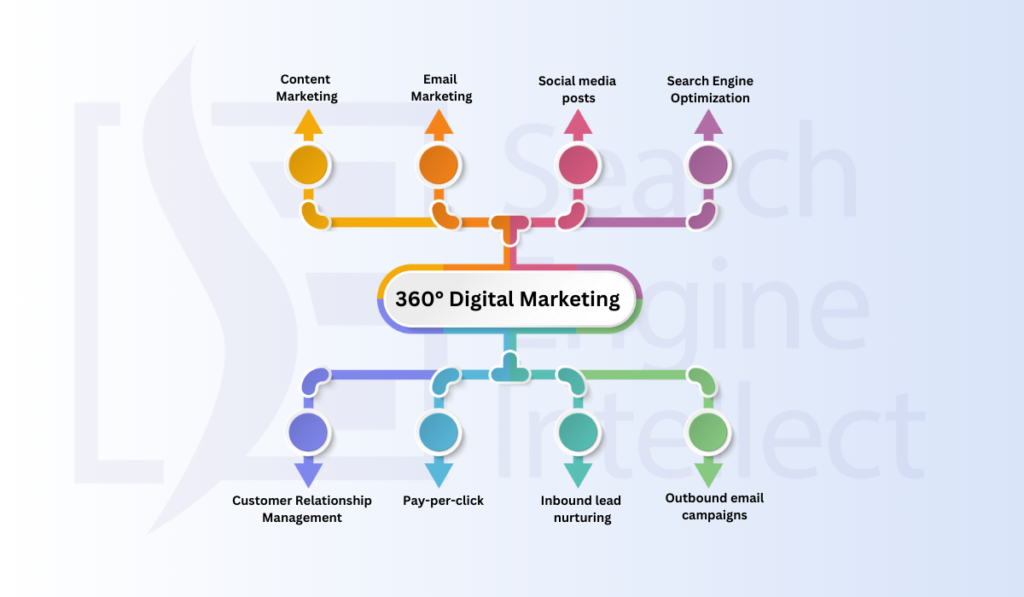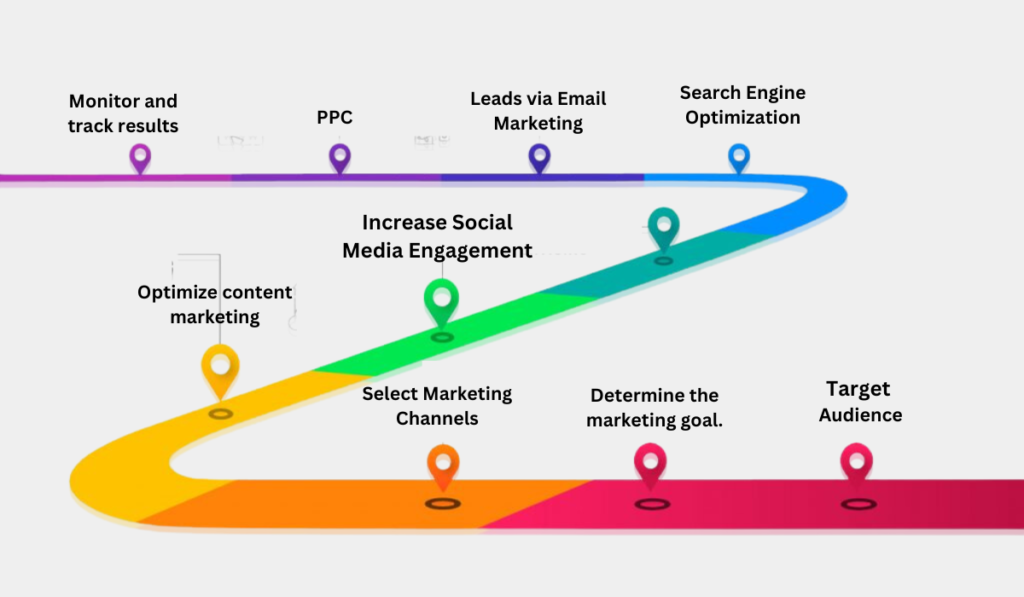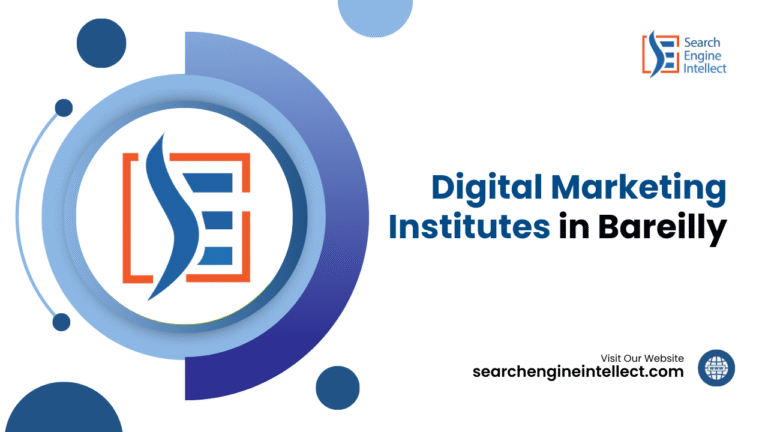What is 360 Digital Marketing and How to Build an Effective Campaign?
360 digital marketing is an integrated approach that encompasses all facets of online marketing to create a cohesive and engaging user experience. This strategy is essential for businesses aiming to enhance their visibility and effectively communicate their brand message across multiple channels.
Table of Contents
What is 360° Digital Marketing?
360-degree digital marketing refers to a comprehensive marketing strategy that leverages various online platforms and channels to reach potential customers. This approach ensures that brands deliver a consistent message, enhancing their online presence and fostering a deeper connection with their audience.
By integrating diverse marketing concepts—such as visual branding, content marketing, and customer relationship management—360-degree marketing facilitates a seamless customer journey, allowing consumers to engage with the brand at multiple touchpoints.
Benefits of 360° Digital Marketing

One of the most significant benefits of 360 marketing is that it enables marketers to advertise their brands through multiple media. It ensures a laser-focused reach so businesses can expand their customer base and reach more people. Also, it considers and assesses a buyer’s journey through every angle.A 360 digital marketing campaign covers the following channels and elements:
- Content marketing
- Email marketing
- Social media posts
- Search engine optimization
- Customer Relationship Management
- Pay-per-click
- Inbound lead nurturing
- Outbound email campaigns
- Content Marketing: High-quality, relevant content is crucial for engaging audiences and conveying brand messages. This includes blogs, videos, infographics, and other formats that provide value to potential customers.
- Email Marketing: Personalizing email campaigns based on user behavior and preferences helps nurture leads and build trust with potential customers. Automation tools can streamline this process, making it more efficient.
- Social Media: With billions of users active on social platforms, leveraging social media is essential for reaching a wider audience. Tailoring content to fit the unique characteristics of each platform can enhance engagement.
- Search Engine Optimization (SEO): SEO strategies help improve a brand’s visibility in search engine results, driving organic traffic to websites. This involves optimizing content with relevant keywords and ensuring that web pages are user-friendly.
- Customer Relationship Management (CRM): Effective CRM practices help businesses manage interactions with current and potential customers, ensuring a personalized experience that can lead to higher conversion rates.
- Pay-Per-Click (PPC) Advertising: PPC campaigns allow businesses to target specific audiences quickly, generating immediate traffic and brand awareness. However, they should be used in conjunction with organic strategies for best results.
- Inbound lead nurturing: This is typically used in conjunction with CRM to guarantee that your inbound leads receive consistent communications prior to purchasing.
- Outbound email campaigns: Email marketing, a sort of lead nurturing, allows you to send highly personalized emails to your clients that address their specific pain areas and how your solution may help them.
Key Components of a 360° Digital Marketing Campaign

To build an effective 360° Digital Marketing campaign, businesses should follow these essential steps:
Know the Target Audience
The first step in creating a 360 marketing campaign is identifying the audience you want to reach. Before you create a plan, you must first discover about your potential audience, such as who they are, what they prefer, where they live, and so on.
This will allow you to narrow focus on a certain group of users and choose the best platform to reach them. Spend enough time researching your clients, determining the best way to reach them, and communicating your message to them.
Determine the marketing goal.
Now that you’ve determined who to target and provide your products or services, it’s important to create objectives for carrying out the 360 digital marketing campaign. This is the stage in which you determine the purpose of your marketing plan. It can increase organic traffic, search engine rankings, brand awareness, audience engagement, product launch, and revenue.
Your aim will assist you in selecting the appropriate marketing channel, tools, methods, and other aspects. The budget, timing, and resources can all be determined based on your objectives.
Select Marketing Channels to Use
The next step in developing a 360-degree marketing strategy is identifying the appropriate marketing channels to reach the audience of interest and establish a brand.
Online marketing channels include social media, email, blogs, websites, mobile apps, search engines, and so on. You don’t have to use them all, so focus on the ones that are relevant to your aims and possible clients. Choose digital platforms that will assist you establish your presence in the online world.
“Become an expert with Advanced Digital Marketing Training and start your career growth. Enroll in Upcoming Demo Class! “
Optimize content marketing.
Content is everything. It is an essential tool for engaging the audience, interacting with them, and communicating the brand message. Thus, content marketing is essential to any 360-degree digital marketing plan.
Generate new ideas to create high-quality, SEO-friendly, and relevant content that will benefit your brand. Create various sorts of tailored content to better engage readers and deliver value. Ensure that your material addresses the audience’s questions and clears their uncertainties while providing relevant information. It should also teach and entertain them.
Increase Social Media Engagement Rates
Today, billions of social media users spend hours on these platforms connecting with like-minded people, discovering new products, and expanding their networks.
As a result, you must include social media in your 360 marketing strategy. It is the most effective strategy to reach a larger audience, engage with users, build a community, and increase brand visibility.
When using social media into your marketing effort, you must recognize that no two platforms are comparable. Twitter has its own audience that appreciates sharing their thoughts on it, whilst Instagram is great for a different group of people.
Focus on Search Engine Optimization.
According to statistics, approximately 93% of internet experiences begin with organic search. As a result, SEO is an essential component of every digital marketing plan. SEO is at the heart of any online marketing effort since it improves brand presence on search engines, optimises web pages for more user engagement, and delivers traffic to the website.
Anyone wondering what a 360-degree marketing strategy is must grasp the value of SEO in tailoring their marketing methods and directing their efforts in the appropriate direction.
Unlock your brand’s potential with 360 Digital Marketing! Learn how to build effective campaigns and engage your audience today!
Nurture Leads via Email Marketing
Make a list of purchasers and subscribers to get the most out of email marketing. It is one of the most effective marketing strategies firms use to nurture leads, build trust, and connect with them.
Personalize your email messages according to user choices and activity trends. This will allow you to connect and interact with them. Furthermore, tailored messages and subject lines encourage consumers to open and read emails once.
Use PPC for more targeted marketing.
You must spend in pay-per-click advertising to achieve a more targeted marketing strategy that puts your brand in front of users. This paid marketing strategy asks you to pay a certain sum for each click on your ad. You can advertise on social media, websites, e-commerce platforms, and other channels.
PPC is known for producing quick results, but it requires a large expenditure. As a result, PPC is more commonly used by larger brands and enterprises. Brands must employ paid advertising as an important component of 360 marketing, but they cannot rely solely on them for success.

Provide a seamless user experience.
Your web pages, landing pages, and websites must be responsive in order to provide a consistent and valuable user experience. Text, photos, videos, and other elements must be responsive to different screen sizes and devices.
Users must be able to navigate the website and find the products or information they need without difficulty. So, optimize user interfaces because they lead to increased conversions.
Monitor and track results.
Finish your 360-degree marketing strategy by tracking and measuring results. You must maintain a careful watch on progress, monitor results, and implement remedial steps to improve.
You can use numerous tools and software to monitor various KPIs and metrics on a regular basis. This will tell you if you’re headed in the right direction and allow you to make the necessary changes to go back on track
Conclusion
A 360 digital marketing strategy is essential for businesses looking to thrive in a competitive digital landscape. By comprehensively addressing customer needs and preferences across various channels, brands can create meaningful connections, enhance engagement, and ultimately drive growth. This holistic approach not only strengthens brand presence but also fosters long-term relationships with consumers, paving the way for sustained success in the digital age.







